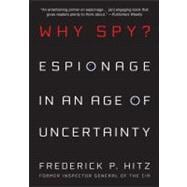
What is included with this book?
Frederick P. Hitz, author of The Great Game: The Myths and Reality of Espionage, was inspector general of the CIA from 1990 to 1998. He also has been a lecturer at Princeton University. He currently teaches at the University of Virginia’s School of Law and Department of Politics.
The New copy of this book will include any supplemental materials advertised. Please check the title of the book to determine if it should include any access cards, study guides, lab manuals, CDs, etc.
The Used, Rental and eBook copies of this book are not guaranteed to include any supplemental materials. Typically, only the book itself is included. This is true even if the title states it includes any access cards, study guides, lab manuals, CDs, etc.